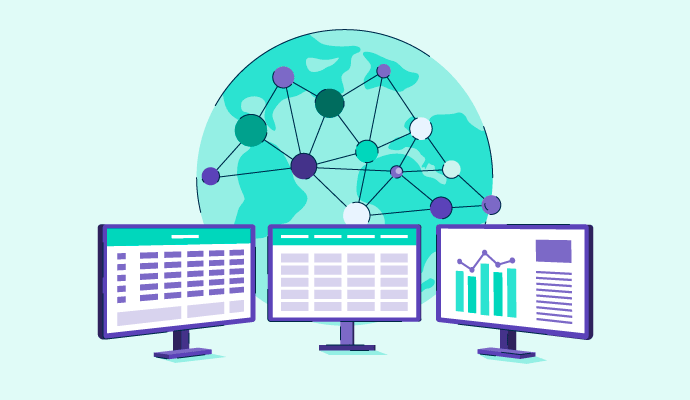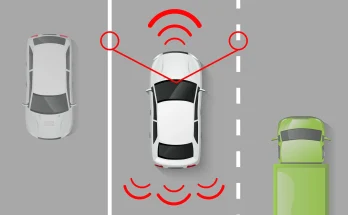JAKARTA, cssmayo.com – Network Monitoring is the unsung hero of IT operations—when it works well, nobody notices, but when it fails, everything falls apart. I’ve spent countless nights troubleshooting outages that could have been prevented with proper monitoring, and I’ve also witnessed how robust Network Monitoring transforms reactive firefighting into proactive system management. In this comprehensive guide, I’ll share practical insights on implementing Network Monitoring solutions that genuinely ensure system reliability, not just generate alerts that everyone ignores.
What Is Network Monitoring?

The Fundamentals
Network Monitoring involves continuously observing network infrastructure—routers, switches, firewalls, servers, and applications—to detect performance issues, security threats, and outages. It collects metrics like bandwidth utilization, packet loss, latency, and device health, providing visibility into how your network actually performs.
Why Network Monitoring Matters
Modern businesses depend entirely on network connectivity. E-commerce sites lose revenue with every minute of downtime. Remote workforces can’t function without reliable VPNs. Cloud applications demand consistent bandwidth. Network Monitoring ensures you detect and resolve issues before they impact users, protecting productivity, revenue, and reputation.
Beyond Simple Uptime Checks
Basic ping tests tell you if a device responds, but effective Network Monitoring goes deeper—analyzing traffic patterns, identifying bottlenecks, tracking application performance, and correlating events across infrastructure layers. Comprehensive monitoring reveals the “why” behind problems, not just the “what.”
Core Components of Network Monitoring
Device and Infrastructure Monitoring
Hardware Health
Network Monitoring systems track CPU utilization, memory consumption, temperature, and fan speeds on network devices. Overheating switches or failing power supplies trigger alerts before catastrophic failures occur, allowing preventive maintenance.
Interface Statistics
Monitoring interface metrics—bandwidth utilization, error rates, discarded packets—reveals congestion, misconfigurations, and failing hardware. I’ve diagnosed countless “slow network” complaints by identifying saturated uplinks through Network Monitoring dashboards.
Performance Monitoring
Latency and Packet Loss
Network Monitoring continuously measures round-trip times and packet loss between critical endpoints. Degraded performance often precedes complete outages, giving you time to investigate and remediate before users complain.
Throughput Analysis
Tracking actual throughput versus available bandwidth identifies applications consuming excessive resources. Effective Network Monitoring helps you enforce QoS policies, prioritizing business-critical traffic over recreational streaming.
Availability Monitoring
Service Uptime
Beyond device availability, Network Monitoring verifies that services—web servers, databases, DNS, DHCP—respond correctly. Synthetic transactions simulate user interactions, detecting application-layer failures that simple ping tests miss.
Multi-Location Monitoring
Global organizations need Network Monitoring from multiple vantage points. A service accessible from headquarters might be unreachable from branch offices due to routing issues or regional ISP problems.
Security Monitoring
Anomaly Detection
Network Monitoring establishes baseline traffic patterns, then alerts on deviations—sudden bandwidth spikes, unusual connection attempts, or unexpected protocol usage. These anomalies often indicate security incidents like DDoS attacks or malware propagation.
Compliance and Audit Trails
Regulated industries require detailed logs of network activity. Network Monitoring systems capture and archive traffic flows, configuration changes, and access attempts, supporting compliance audits and forensic investigations.
Essential Network Monitoring Metrics
Bandwidth Utilization
Tracking bandwidth consumption across interfaces and time periods reveals usage trends and capacity planning needs. Network Monitoring helps you identify when to upgrade circuits before congestion impacts performance.
Latency and Jitter
Low latency is critical for real-time applications like VoIP and video conferencing. Network Monitoring measures not just average latency but also jitter (latency variation), which causes choppy audio and frozen video.
Packet Loss
Even small percentages of packet loss degrade application performance. Network Monitoring pinpoints where packets disappear—faulty cables, overloaded devices, or misconfigured routing—enabling targeted troubleshooting.
Error Rates
CRC errors, frame errors, and collisions indicate physical layer problems. Network Monitoring trends these metrics over time, helping you identify degrading hardware before complete failure.
Device Availability
Uptime percentages matter for SLA compliance. Network Monitoring tracks availability across your infrastructure, identifying chronic problem devices and quantifying reliability improvements.
Network Monitoring Tools and Technologies
SNMP (Simple Network Management Protocol)
SNMP remains the backbone of Network Monitoring, enabling centralized collection of device metrics. Modern monitoring platforms query SNMP MIBs (Management Information Bases) to gather comprehensive statistics from routers, switches, and servers.
Flow-Based Monitoring (NetFlow, sFlow, IPFIX)
Flow technologies provide detailed visibility into network conversations—who’s talking to whom, which applications consume bandwidth, and traffic patterns over time. Network Monitoring with flow analysis enables capacity planning and security investigations.
Packet Capture and Deep Packet Inspection
For troubleshooting complex issues, Network Monitoring systems capture and analyze actual packets. DPI reveals application-layer problems, protocol violations, and security threats that aggregate metrics miss.
Synthetic Monitoring
Proactive Network Monitoring uses synthetic transactions—scripted interactions that simulate user behavior—to detect issues before real users encounter them. Synthetic monitoring validates end-to-end service availability and performance.
Agent-Based vs. Agentless Monitoring
Agent-based Network Monitoring installs software on monitored devices for detailed metrics, while agentless approaches use SNMP, APIs, or network taps. Each has trade-offs—agents provide depth, agentless monitoring offers simplicity and broad compatibility.
Popular Network Monitoring Solutions
Nagios
This open-source stalwart excels at availability monitoring and alerting. Nagios’s plugin architecture supports extensive customization, making it popular for Network Monitoring in heterogeneous environments, though its interface feels dated.
PRTG Network Monitor
PRTG offers comprehensive Network Monitoring with an intuitive interface and auto-discovery features. Its sensor-based licensing model suits small to mid-sized networks, providing bandwidth monitoring, SNMP, and custom sensors out of the box.
SolarWinds Network Performance Monitor
SolarWinds delivers enterprise-grade Network Monitoring with powerful visualization, NetFlow analysis, and intelligent alerting. It’s feature-rich but expensive, targeting larger organizations with complex networks.
Zabbix
Another open-source option, Zabbix provides scalable Network Monitoring with auto-discovery, distributed monitoring, and flexible alerting. Its active community and extensive documentation make it accessible for organizations with technical expertise.
Datadog and New Relic
Cloud-native platforms like Datadog integrate Network Monitoring with application performance monitoring (APM) and log management. They excel in dynamic, cloud-based environments where traditional tools struggle with ephemeral infrastructure.
Wireshark
While not a continuous monitoring platform, Wireshark is essential for Network Monitoring troubleshooting. Its deep packet analysis capabilities diagnose protocol issues, application problems, and security incidents that aggregate metrics can’t reveal.
Implementing Effective Network Monitoring
Start with Critical Assets
Don’t try to monitor everything immediately. Begin Network Monitoring with infrastructure that directly impacts business operations—core routers, firewalls, critical servers, and internet connections. Expand coverage as you refine processes.
Define Meaningful Thresholds
Alert fatigue kills monitoring programs. Effective Network Monitoring requires carefully tuned thresholds based on baseline behavior, not arbitrary percentages. An 80% CPU spike might be normal during backups but alarming during business hours.
Establish Baseline Performance
Before you can detect anomalies, you need baselines. Run Network Monitoring in observation mode initially, collecting weeks of data to understand normal patterns. Baselines inform threshold settings and capacity planning.
Implement Tiered Alerting
Not every issue requires immediate response. Structure Network Monitoring alerts by severity—critical (immediate page), warning (email), and informational (dashboard only). Route alerts to appropriate teams based on expertise and responsibility.
Integrate with Incident Management
Network Monitoring alerts should automatically create tickets in your incident management system (ServiceNow, Jira, PagerDuty). Integration ensures issues are tracked, assigned, and resolved systematically, not lost in email floods.
Best Practices for Network Monitoring
Monitor from Multiple Perspectives
Network Monitoring from a single location misses regional issues. Deploy monitoring probes at branch offices, data centers, and cloud regions to detect localized problems and validate end-user experience.
Correlate Events Across Systems
A single root cause often triggers multiple alerts. Advanced Network Monitoring platforms correlate related events, suppressing duplicate notifications and highlighting probable causes. Correlation reduces noise and accelerates troubleshooting.
Automate Remediation When Possible
Some issues have known fixes. Configure Network Monitoring systems to automatically restart failed services, clear disk space, or fail over to redundant systems. Automation resolves routine problems faster than human response.
Regularly Review and Tune
Networks evolve—new applications, changed traffic patterns, infrastructure upgrades. Schedule quarterly Network Monitoring reviews to update baselines, adjust thresholds, retire obsolete checks, and add coverage for new systems.
Document Monitoring Policies
Clearly document what you monitor, why, and how teams should respond. Network Monitoring documentation ensures consistent incident response, facilitates training, and provides context for alert recipients.
Real-World Network Monitoring Success Stories
E-Commerce: Preventing Revenue Loss
An online retailer implemented comprehensive Network Monitoring with synthetic transactions simulating checkout processes. When monitoring detected a payment gateway slowdown at 2 AM, automated alerts woke the on-call engineer who rerouted traffic to a backup gateway before morning shoppers arrived—preventing an estimated $500K in lost sales.
Healthcare: Ensuring Life-Critical Systems
A hospital network deployed Network Monitoring with redundant probes and out-of-band management. When a ransomware attack encrypted file servers, monitoring detected unusual traffic patterns and triggered isolation procedures within minutes, containing the infection before it reached medical imaging systems.
Manufacturing: Predictive Maintenance
A factory used Network Monitoring to track temperature and vibration sensors on production equipment. Trending analysis revealed gradual degradation in a critical motor, enabling scheduled maintenance during planned downtime rather than catastrophic failure during peak production.
Common Network Monitoring Challenges
Alert Fatigue
Poorly configured Network Monitoring generates thousands of false positives, training staff to ignore alerts. Combat fatigue through careful threshold tuning, intelligent correlation, and regular review of alert effectiveness.
Monitoring Blind Spots
Encrypted traffic, cloud services, and third-party SaaS applications create visibility gaps. Modern Network Monitoring strategies incorporate API integrations, endpoint agents, and SSL decryption (where legally and ethically appropriate) to maintain comprehensive coverage.
Scalability Limitations
As networks grow, monitoring systems struggle with data volume and processing demands. Plan Network Monitoring architecture for scale—distributed collectors, time-series databases, and efficient data retention policies prevent performance bottlenecks.
Skill Gaps
Effective Network Monitoring requires understanding networking fundamentals, monitoring tools, and troubleshooting methodologies. Invest in training and Documentation to ensure teams can interpret alerts and respond effectively.
The Future of Network Monitoring
AI and Machine Learning
Next-generation Network Monitoring platforms Leverage AI to automatically establish Baselines, predict failures before they occur, and recommend Remediation actions. Machine learning identifies subtle patterns humans miss, Improving detection Accuracy.
Intent-Based Networking
As networks become more Automated, Network Monitoring evolves to verify that infrastructure behavior matches Declared intent. Systems Continuously Validate that security policies, performance requirements, and compliance mandates are Enforced correctly.
Cloud and Hybrid Monitoring
Modern Network Monitoring must span On-premises infrastructure, multiple cloud providers, and SaaS applications. Unified platforms provide consistent Visibility regardless of where Workloads run, Simplifying hybrid and Multi-cloud operations.
Conclusion
Network Monitoring is Foundational to system reliability, transforming IT operations from Reactive Firefighting to Proactive management. By Implementing comprehensive monitoring across devices, performance, availability, and security—combined with intelligent Alerting, Automation, and continuous improvement—organizations detect and resolve issues before they impact users. Whether you’re running a small business network or global enterprise infrastructure, effective Network Monitoring protects productivity, revenue, and reputation. Start with critical assets, tune carefully to avoid alert fatigue, and remember that monitoring is not a project but an ongoing discipline that evolves with your network.
Elevate Your Competence: Uncover Our Insights on Techno
Read Our Most Recent Article About Open Source Development!




